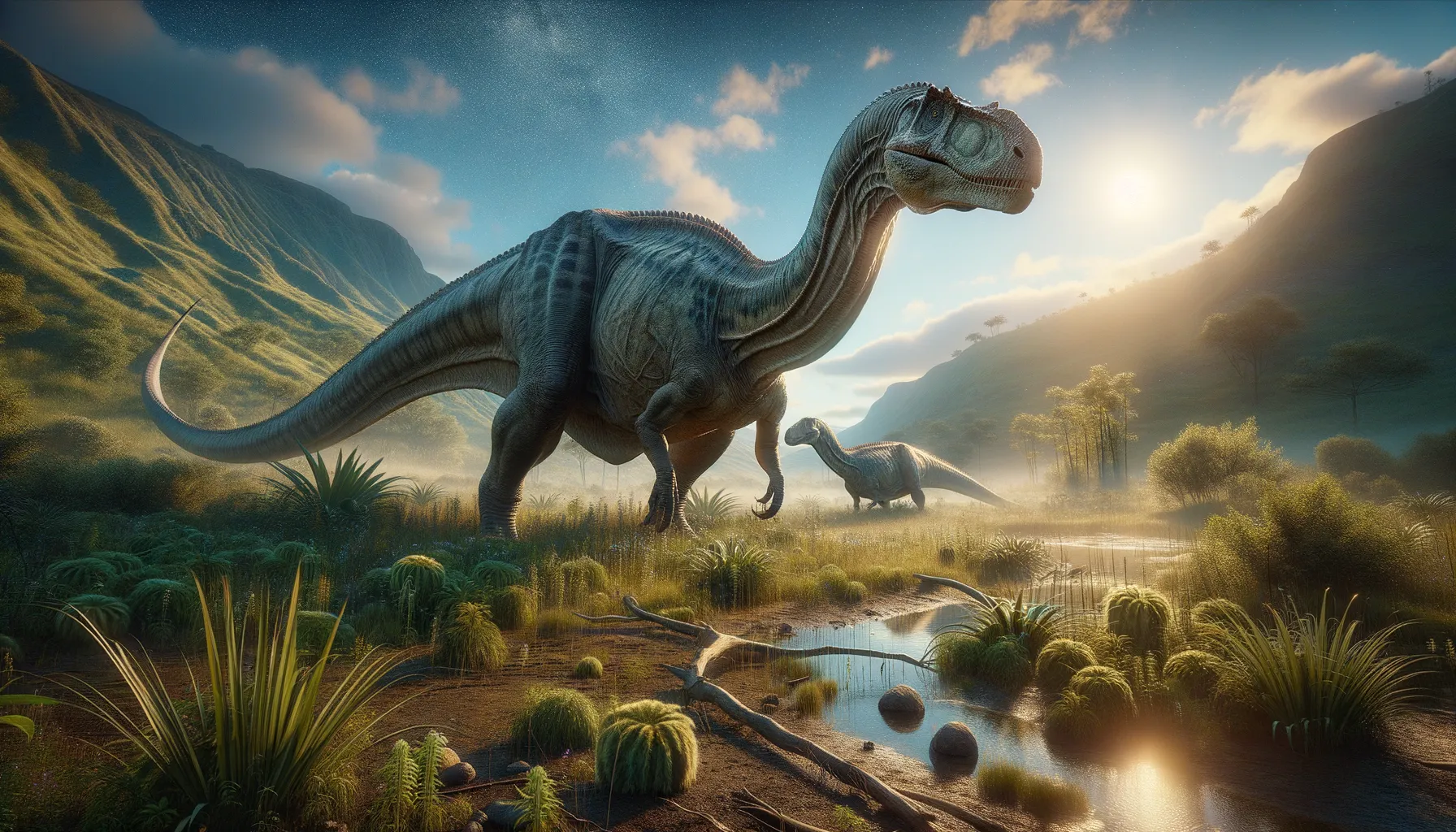
Elosaurus
Graceful giants of the Jurassic era!
Period
Jurassic
Length
Up to 60 feet long.
Height
Around 12 to 15 feet tall.
Weight
Approximately 10 to 15 tons.
Elosaurus was a massive dinosaur that roamed the Earth during the Jurassic period. Known for its long neck and tail, it is believed to have fed primarily on vegetation. Its bones have provided insight into the lives of these giant creatures, revealing much about their habitats and behavior. Excavations of Elosaurus fossils have contributed significantly to our understanding of the prehistoric ecosystems they inhabited.
Diet
Elosaurus primarily fed on plants, using its long neck to reach foliage high in trees or lower shrubs. Its diet consisted mainly of ferns and other Jurassic flora, helping to maintain the vegetation cycle.
Hunting
As a herbivore, Elosaurus did not hunt. Instead, it spent much of its time foraging for plants, using its formidable size as a deterrent to predators.
Environmental challenges
Elosaurus faced challenges such as climate fluctuations, which affected the availability of plant food. Predators posed a threat to younger or weaker individuals. They also had to adapt to shifting landscapes, as tectonic activities could alter their habitats.
Speed
Moderate pace, similar to large herbivores.
Lifespan
Estimated around 70 to 80 years.
First discovery
Identified from fossil remains in the early 20th century.
Fun Facts
- Elosaurus was a large, plant-eating dinosaur found in North America.
- It lived during the Late Jurassic period, approximately 150 million years ago.
- Elosaurus is thought to have had a long neck, which helped it reach high vegetation.
- Despite its size, Elosaurus was likely a gentle giant similar to modern-day herbivorous animals.
- It is related to other well-known dinosaurs like Brachiosaurus and Diplodocus.
- Fossils of Elosaurus have revealed much about the diversity of dinosaur life during its time.
- Elosaurus was part of a group known for their massive size and long tails, helping them balance and move efficiently.
Growth and Development
Elosaurus hatched from eggs and grew rapidly in the first few years to avoid predation. As it matured, its growth rate slowed, and the development of strong bones supported its massive frame. They continued to grow throughout their lives, albeit at a slower pace once reaching adulthood.
Habitat
Elosaurus lived in lush, forested environments where water sources were plentiful. Their habitats were rich in vegetation, providing ample food supplies. These areas experienced seasonal changes, which influenced their migratory patterns.
Interaction with other species
Elosaurus coexisted with various herbivores and predators. It likely formed herds for protection and social interactions. They communicated with one another through vocalizations and physical gestures.
Natural lifespan
Elosaurus's natural lifespan allowed it to live for several decades.
Reproduction
Elosaurus laid eggs in nests, which were carefully tended by the herd to ensure safety. Hatchlings were vulnerable and required protection from predators. They increased the herd's numbers, strengthening their social structure.
Social behaviour
Elosaurus displayed communal living, forming herds for protection and socialization. They used vocalizations and body language to maintain herd hierarchy. Mutual grooming might have played a role in establishing social bonds.
Fossil locations
Fossil remains of Elosaurus have been uncovered in parts of North America. These findings have provided crucial evidence of their distribution and the environmental conditions they lived in. Fossil sites have also yielded insights into their anatomy and lifestyle.
